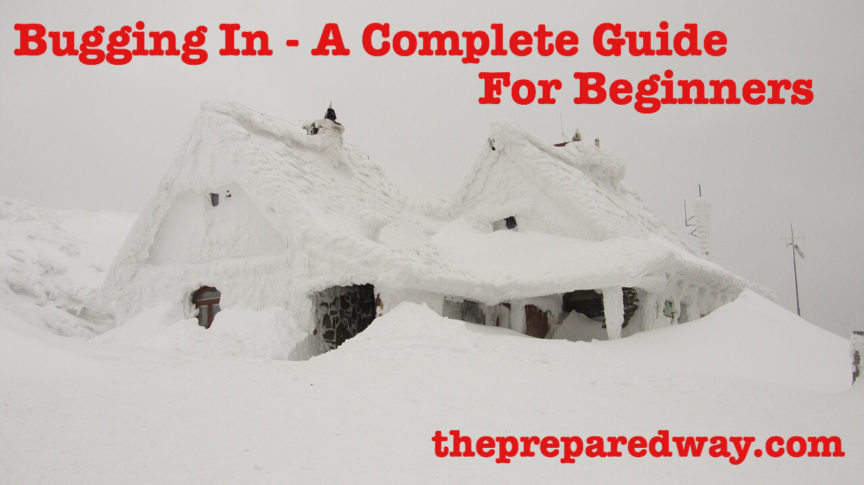You always hear the prepping community talking about bugging out, when in reality, you are more likely to bug in. Although you should be prepared to bug out (leave your home), being ready to hunker down and weather the storm in the security of your home should be your first plan, I touched on this in an article I wrote Bug In or Bug Out? – A Reality Check
What is Bugging In? Well, if you are at home it’s simply sheltering in place, staying in your home instead of leaving (bugging out).
This article is Step #5 of my series, Practical Prepping For Beginners: A No-Nonsense Quick Start Guide, if you haven’t read the rest of the series check it out here. In this series I’ve already covered:
- PERFORMING A SELF-ASSESSMENT
- HOW TO MAKE A BUG OUT PLAN
- HOW TO BUILD A BUG OUT BAG/KIT
- HOW TO BUILD A GET HOME BAG
When it comes to Bugging In there are two basic time frames you should consider. Short Term and Long Term. Short Term refers to a local or regional event that will leave you to fend for yourself for up to 2 weeks but more often than not, these events last less than 3 days. Most short term events will be “denial of services” events, these are often caused by local and regional natural disasters including
- Severe Thunderstorms
- Hurricanes
- Ice Storms
- Flooding
The main services that these types of events disrupt are travel, electricity and other utilities. Obviously, if you are bugging in you aren’t worried about traveling anywhere or you are bugging in because you can’t leave due to impassable roads. So that leaves Electricity and Utilities or the lack thereof, as your primary concern. Without electricity most, all public and private infrastructure comes to a halt. I talk more in-depth about this in my article; Why You Need To Start “Prepping” Today!
Long Term is what you think of when you hear the name “preppers”, this is planning for months or even years without support from the outside world. To some, this may seem unrealistic but with the complexity of the power grid, a long term and widespread power outage that could last months, are becoming a bigger threat every year.
Shelter
SHORT TERM – When we discussed short term bugging in, we mean actually going into your home or apartment and staying there during an event. You should have everything you need to survive, presaged in or around your home. For instance, for hurricanes, you should have precut boards with screws and a cordless screwdriver ready to install at a moments notice.
Another thing to consider, if you need to seal up your home from an airborne threat like a chemical accident or other airborne contaminants, you would benefit from pre-staging your gear in an interior room that can be sealed up easily with duct tape and/or plastic sheeting, and still have enough room to house your family and essential gear and supplies for 72 hours.
LONG TERM – For long term events, you will likely not be sheltering in your home the entire time. In this type of event, you will need to be able to maintain your home i.e. repair things like doors, broken windows or a leaky roof. Having some basic tools, skills, and materials to keep your home secure is important for long term preparedness.
NOTE: It’s also important to know where your utilities shut offs are and how to use them and have any special tools that may be necessary to do so.
Home Defense
Where does home defense come into play? You may be bugging in not because of a natural disaster but because of civil unrest or maybe there is looting before, during and after a disaster. No matter the reason you may have to defend your home and family from others. It’s unfortunate that some people feel like when no one is around to stop them, that they can steal, hurt and destroy others and their property but that is the world we live in so we need to be prepared for that possibility.
FORTIFYING YOUR HOME – One of the first things you can do to fortify your home is to reinforce your ingress and egress points. This means using quality doors and locks with the addition of door-jamb reinforcement. Also, utilizing landscaping to restrict access to first-floor windows, like planting thorny bushes and shrubs under and around these points. Knowing what’s going on outside your home with a multi-camera security system can give you valuable information and allow you to make informed decisions about defending your family.
DEFENDING YOUR FAMILY – When everyone in your neighborhood is calling 911, whose house are they going to first? Chances are it’s not yours, so you better have a plan to defend your family. The defensive tools that you chose to utilize are up to you. Just remember to get training and be able to maximize the effectiveness of those tools. Also, you need to have a home defense plan that everyone in your home knows and that they understand their part in that plan.
Heat
If you live in the northern half of the United States or anywhere that has four actual seasons, being able to heat your home is VERY important. Whether you use electricity, natural gas or propane to heat your home, if the power grid goes down the electronic controls, igniters, and blower fans all stop working.
SHORT TERM – So how do you deal with a short term loss of your primary heat source? If it’s only a loss of electrical power then you may be fine with a backup generator. With the right size generator and proper installation, you can power a furnace plus many of your other important appliances like refrigerators and freezers.
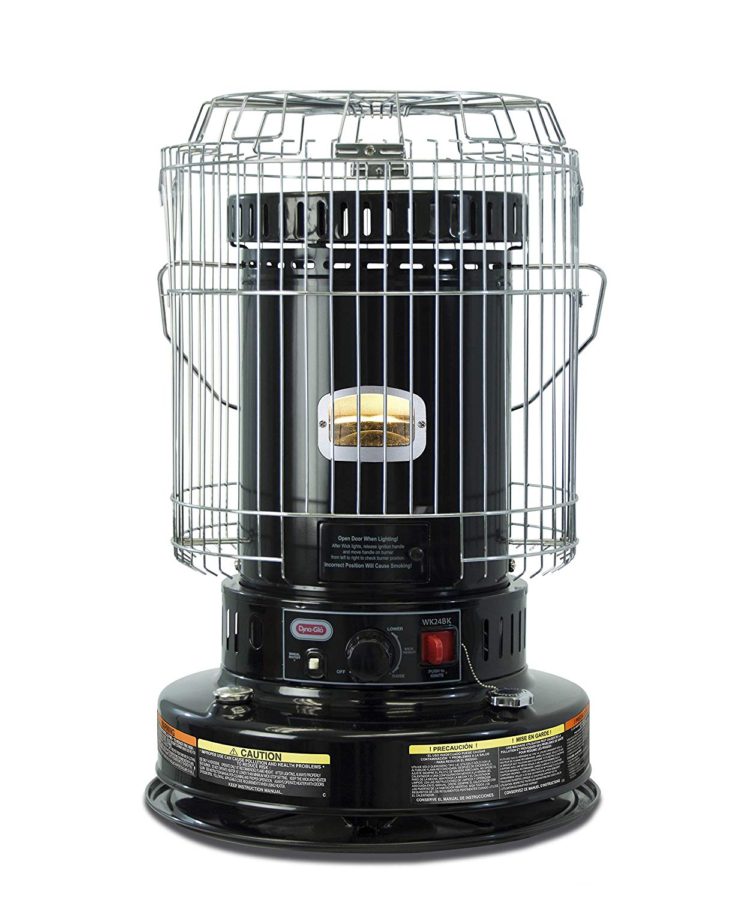
Propane and kerosene heaters are the best short term heat sources that don’t use electricity. Using these types of heaters are great for keeping a low profile as they do not emit smoke like a wood burning stove would.
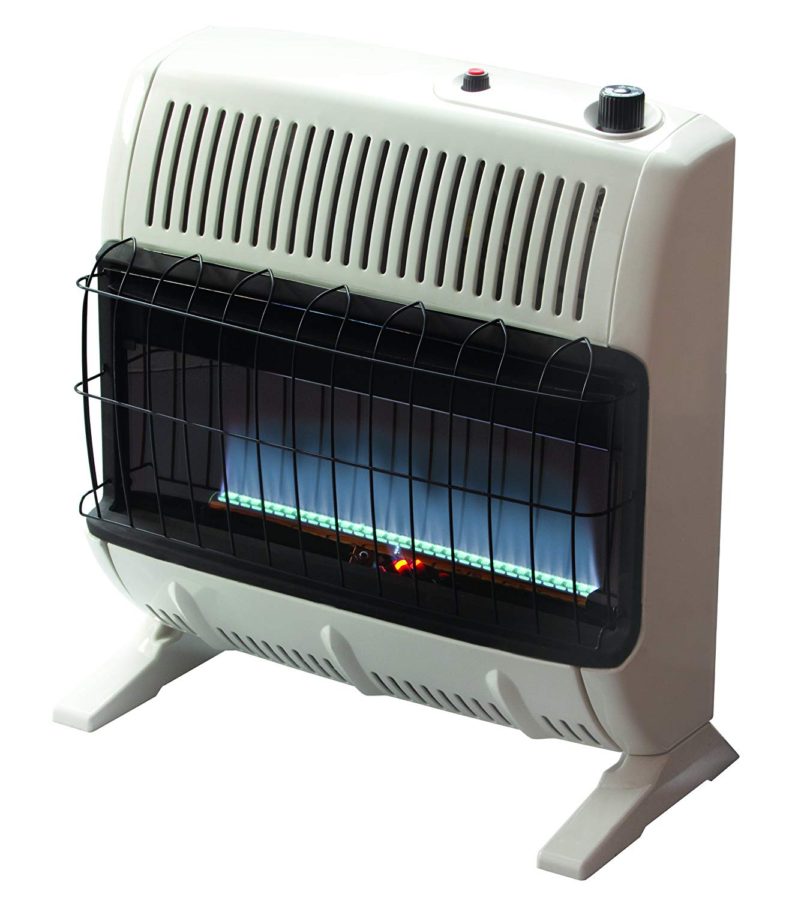
Of the two, propane is the cleanest burning and also has the longest shelf life. Another advantage you get with propane, you can use it to fuel a propane camp stove for easy cooking as well.
NOTE: Make sure to use smoke and carbon monoxide detectors, especially when using heaters in areas that are not well ventilated.
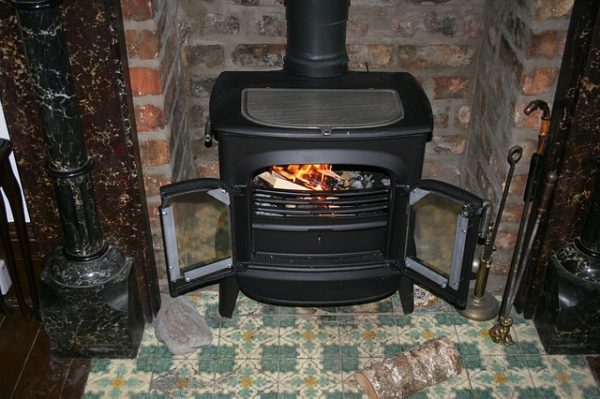
LONG TERM – When it comes to long term heat the only real solution is a wood burning stove but these come with there own set of problems that need to be addressed. Besides the purchase and installation of the stove, you also need to have enough room to store wood, have the equipment to process wood and have a source for resupply. What equipment do you need to process wood?
- Chainsaw
- Gas (for saw)
- 2 Cycle Oil (for saw)
- Bar Oil (for saw)
- Chainsaw Blade Sharpener
- Extra Chainsaw Blades
- Axes
- Mauls
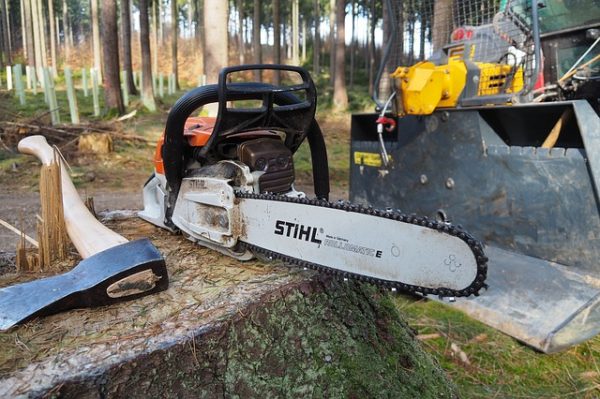
For starters you will need a chainsaw, I recommend at least 2 quality saws. This will be a critical piece of equipment if you are counting on wood for your primary heat source, so the “Two is One and One is None” policy applies here.

Water
Having clean, drinkable water is one of the most critical supplies that you need to survive. The average person needs about a 1/2 gallon of drinking water per day and another 1/2 gallon for cooking and hygiene but this may vary by age and/or other medical conditions. Not only do you need to be able to store water for the short term but you may need to be able to collect and purify more if needed.
SHORT TERM – When we talk about short term, we are mostly focused on storage. For a short term bug in you should plan on 1 gallon per person, per day. Remember that water is a necessity and you can never have too much. The minimum number of day you should plan on having on hand is 3, but I would stretch that out to 2 weeks if possible. Based on 3 days a family of four should have 12 gallons but for 14 days you would need 56 gallons.
How To Store Your Water – How to choose to do this will vary depending on how much water you will need to store. The easiest way is to buy cases of water but this is also the most expensive and if you have a family of 4 that’s a lot of cases of water. If you are on a budget you can use 2-liter soda bottles that have been thoroughly cleaned and sanitized.
If you have limited space you can get stackable 5-gallon jugs that can be tucked away in closet corners or anywhere they fit nicely. If you have space, going with bulk food grade containers will allow 55 to 250+ gallons of storage. I usually keep about five 1 gallon jugs, one 5 gallon jug and two 55 gallon barrels full at all times. This maths out to be over a months supply of water for my family.
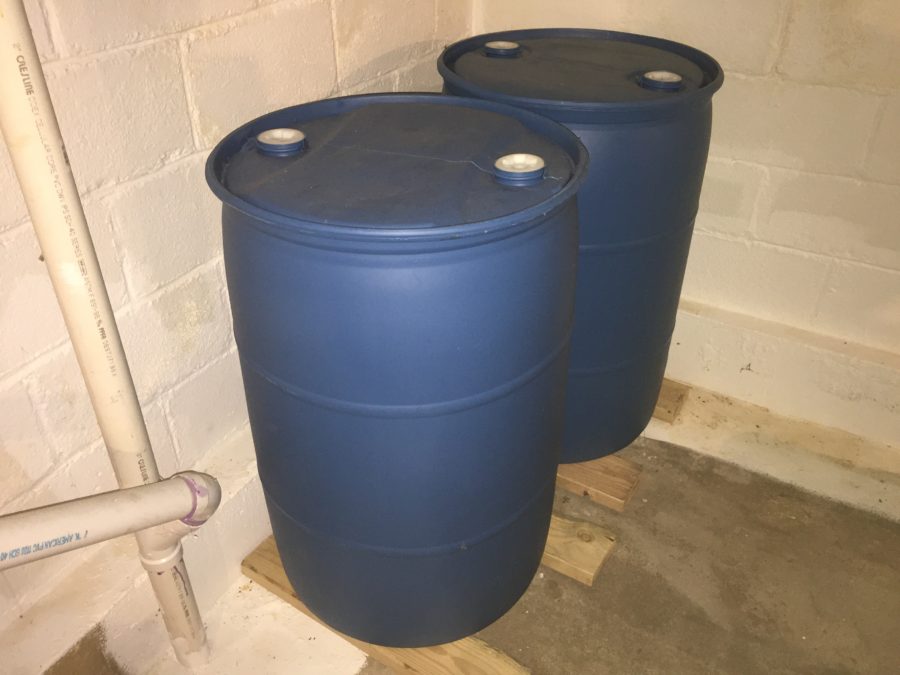
Preparing Containers For Water Storage – When you are ready to fill your water containers some preparation is needed. If you want to store your water for a long period of time you will need to follow these steps.
- Wash the container and lid, inside and out with soap and hot water.
- Rinse Out the container and lid with a water and bleach solution for at least 30 seconds. (1 Teaspoon unscented household bleach per 1-quart water)
- If using treated city water, fill the container and tighten the lid and you are done. If you are using untreated water, add 1/4 teaspoon of unscented household bleach per gallon of water.
- Then store in a cool dark place, preferably between 50-70 degrees Fahrenheit.
So how long can you store your water once it has been prepared and sealed? It is recommended to replace water stores every 6 months but in reality, if you follow the steps above you should have no problems storing water for years.
NOTE: Do not use milk jugs for water storage, as they are biodegradable and will start to break down and leak over time.
LONG TERM – When talking about long term water, it’s more about collection and purification. Assuming that you have your water storage squared away, the next thing you need to address is how and where are you going to get more water for resupply and how are you going to make that water safe for use.
Collection – We will first cover the how and where of water collection. First, you need to identify all of the possible sources of resupply near your home. The most ideal sources of water are moving streams and rivers, these should be your first choice. Your second options are ponds and lakes which isn’t preferred but work in a pinch. I would pay close attention to the condition of the water to make sure there are no obvious contaminants.
Another way to get water is through rainwater collection. Before designing and installing a rainwater collection system you should check your local laws, as in some places it’s not legal to do so. If you can, this is a great way of collecting water. During non-emergencies, I use my small rainwater collection system for
Purification – Once you have a good water source, you need to make the water usable. There are a few different methods to clean and purify water, each has there time and place. When you need to make water drinkable there are three main things that you need to address, particulates, waterborne protozoa & bacteria, and lastly viruses. A quality filter system will take care of all of these things with the exception of viruses. Viruses are smaller than protozoa and bacteria and require special filters, boiling or the use of chemicals to eliminate.
If you collected water from a lake, pond or other source that you suspect may be contaminated, I would treat for viruses. You have two options. Option #1 is to boil the water for 10 minutes, this may be your only option if you do not have access to bleach, boiling is the most effective method to eliminate viruses.
NOTE: Bleach has a shelf life of 1 year from the date of manufacture if stored sealed and in a dry place below 70 Deg.F
The second option is to use unscented household liquid chlorine bleach that contains 5.25 – 8.25 percent chlorine. Add the amount of bleach according to the chart below, mix thoroughly, then let stand for 1 hour before consumption.
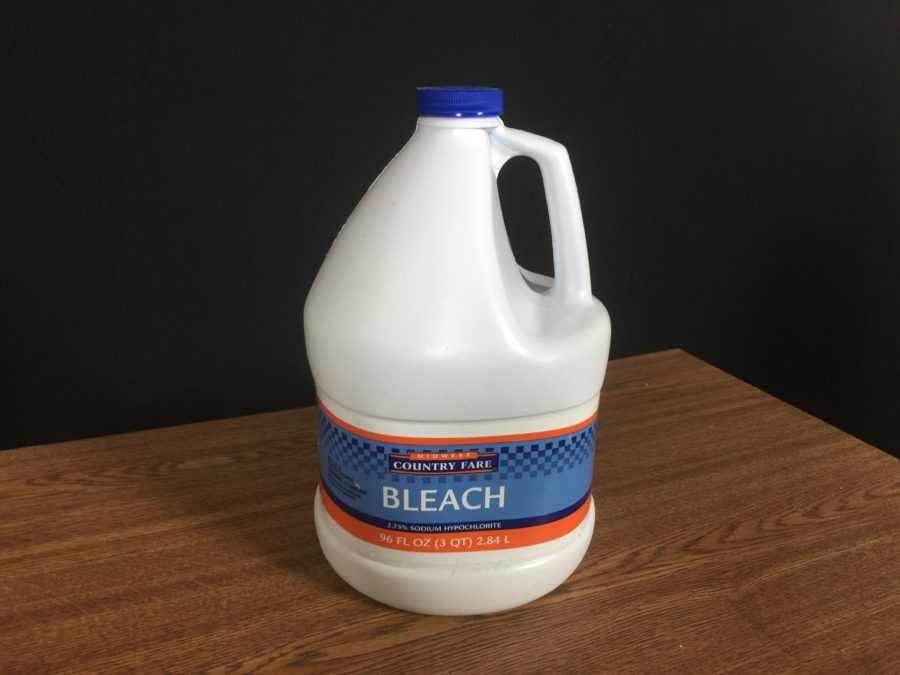
| Water to be Treated | Bleach |
| 1 Gallon | 1/4 teaspoon |
| 5 Gallons | 1 teaspoon |
| 10 Gallons | 2 teaspoons |
NOTE: If the water you collected looks cloudy it is recommended to Filter the water first before treating with bleach.
NOTE: Bleach will not kill some disease-causing organisms often found in surface water. If in doubt, boiling is your best bet.
Filtering Water – When it comes to filtering water I prefer to use a Berkey Water Filter. I like this system because it is a gravity feed system that does not require pumps or electricity to operate. If the water that you are needing to filter is from sources that may contain debris I would recommend prefiltering with a screen or strainer to extend the time between cleanings and prolong the overall life of your filters.
Food
The types of food you choose to stock up on can vary depending on a number of factors including your preparedness level and goals. The first trick is to buy more of what you already eat. Obviously, you don’t want to buy more perishable foods that require refrigeration or freezing but you do what to get extras of the nonperishable foods that you use on a daily basis. This will allow you to keep your diet somewhat normalized during a stressful period of time.
SHORT TERM – For a 72-hour bug in you will want food that requires little or no preparation. One easy thing you can do is get canned fruits and vegetables that you use already. It’s easy to toss a few extra cans in the cart every time you go to the store. Canned food that is not damaged and is fully sealed, can last well beyond the date on the can, but the goal here is not to stockpile a ton of canned goods and then just forget about it until you need it.
This is something that you need to get a good stockpile built up and then replenish it as you use it, this will keep it fresh. You can do this with boxed goods as well but these often have a much shorter shelf life so you will want to rotate these out more often which means eating more or stockpiling less.
Another option for a short term bug in is MREs (Meals Ready to Eat) or meal replacement bars MREs can also be great because they require no preparation. The only drawback is that these usually have a shelf life of 5 years so you will want to rotate them out every few years. Meal replacement bars are also quick and easy but also have a shorter shelf life and can be expensive. Whatever you choose, plan on having at least 3 days of food that does not require any preparation.
Kitchen Supplies – While bugging in you will want to keep things simple and save yourself the hassle of dealing with dirty dishes and using water unnecessarily, make sure to have a supply of paper plates, towels, cups, and bowls. At some point, you may need to heat or boil water so it’s a good idea to have a camp stove. As I said before propane is one of the better choices for this but any camp stove will work.
LONG TERM – This is where you need to think about what your long term preparedness goals are. How long do you want to be able to go without needing resupply from outside sources? 2 weeks, 1 month, 6 months, 1 year? Only you will know what you feel comfortable with. You don’t need to go out and buy a year’s worth food today, you can if you have the money and storage space but most of us don’t. You can start small and build up your preps over time.
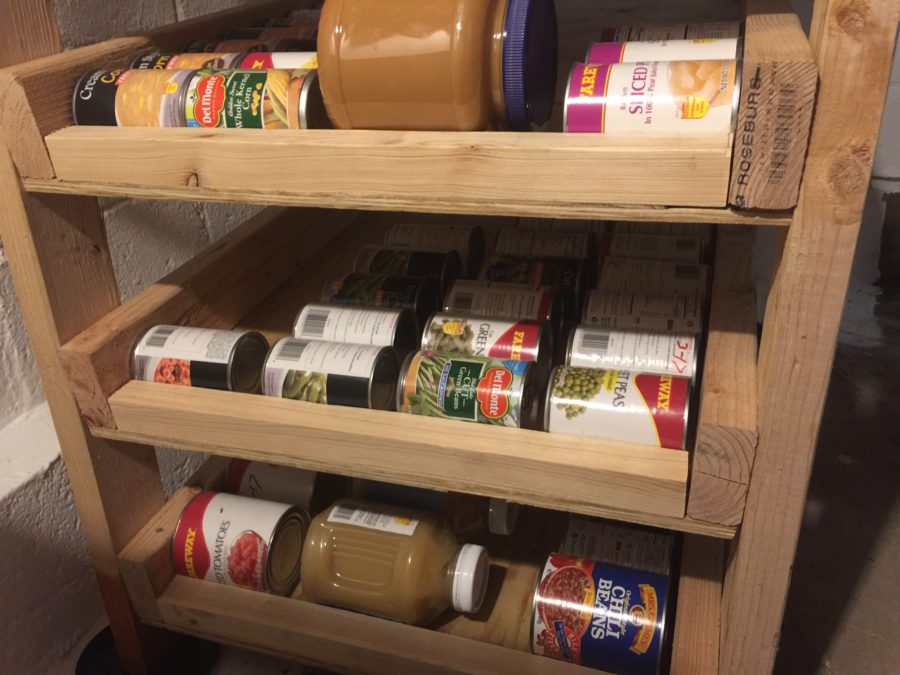
When you get into long term food preps, there are two ways you can go, prepackaged or DIY. Both have their pros and cons, a well-rounded plan will include both.
Prepackaged – Freeze-dried foods can have a shelf life of over 25 years if properly stored, and once reconstituted maintains much of its taste and nutritional value. All you need to do is add hot water to reconstitute the food, cold water will work in a pinch but it will take longer to reach the proper consistency. One of the best things about freeze-dried foods is that you can have a wide variety of different foods from fruits and vegetables to meats and full premade dishes. The only problem with freeze-dried foods, they can be expensive.
DIY – Preparing your own long term food preps can take a little work but there is a significant cost
Hygiene
SHORT TERM – Just because it’s an emergency doesn’t mean you should forget about your hygiene, especially when you will most likely be in tight quarters with others in your family. I would argue that hygiene is probably even more important during a Bug in situation. Being confined in close quarters in a group of people can lead to sickness and disease. Having wet wipes, toilet paper and hand sanitizer on hand is important in preventing the spread illnesses.
LONG TERM – Being prepared to deal with long term hygiene is actually really easy. All you need to do is pick up extras of what you already buy. If you use a bottle of shampoo every month, then for every extra bottle you buy is another months supply and in
Sanitation
When I talk about sanitation I’m really talking about dealing with waste. This can be broken down into two different categories, garbage and human waste. These both have their challenges.
SHORT TERM – During a short term bug in situation you’re not going to have to worry about when the garbage man will be coming but you will be worried about things when the water doesn’t refill the toilet after flushing. Now, what do you do? If the sewer isn’t backing up you could just add water to the toilet’s tank but unless you have a large
There are products designed for camping that are great options for solving this problem. Some inexpensive ones are just a seat and lid that snap on to a 5-gallon bucket, others are specially designed portable toilets that are made for small campers.
LONG TERM – You are going to produce trash as you consume your food preps and you will need to make a plan to deal with it. Anything that cannot be reused needs to be buried to prevent rodents and diseases.
When water and sewer utilities are no longer operational and will be for an extended period of time it may be time to dig and make an outhouse. Just make sure to do this far from your garden, water sources and other places you travel frequently.
Power Generation
There are many different reasons that would cause you to lose power, wind storms, ice storms and thunderstorms all can and will cause the grid to go down. When the power goes out modern life comes to a stop. There are two main methods for power generation, a backup generator,
SHORT TERM – A backup generator lends itself best to short term bug in situations. When the power goes out most of the time, you don’t really know how long it’s going to be out for, could be 10 minutes, 10 hours or even 10 days. Generators are great for keeping the lights on and the refrigerator cold but they do have their limits.
LONGE TERM – Because generators rely on fuel, it’s only a matter of time be for you run out and if you have a propane generator and propane emergency heat you will have to decide if having electricity is more important than having heat. One long term solution is a solar panel system. Solar panel systems can range from small portable systems that you can use to charge your phone or other small devices, to full home systems that can power part or all of your home.
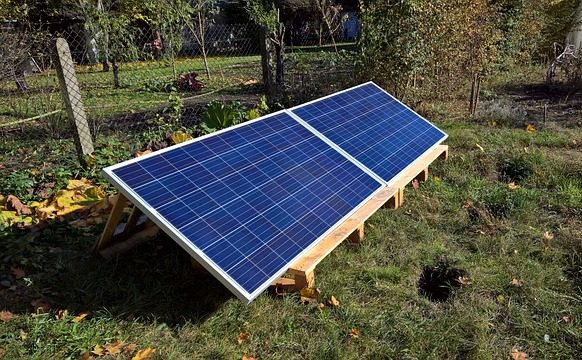
As solar power technology improves, the cost of these systems continues to drop making them more affordable every year. Even a small system can keep batteries charged and some lighting equipment going.
Lighting
When the power grid goes down you will be left in the dark unless you plan ahead. Even if you have a generator, solar panels and batteries, there will be downtime when those systems aren’t available or when you are not in or around your home.
SHORT TERM – Every member of your family needs a handheld LED flashlight and a headlamp. These don’t need to be expensive lights, just ones that work when you need them to. For lighting rooms during a short term bug in, use LED lanterns. Using battery powered-lanterns is a lot safer than using candles or oil lamps.
NOTE: Be sure to use Lithium batteries in your lights to ensure reliability.
LONG TERM – You can continue to use battery-powered lighting as long as you use rechargeable batteries and have the means to charge them, via generator or solar panels but in the long term you may need to use oil or kerosene lanterns and lamps.

NOTE: Make sure to keep a Class III fire extinguisher near any areas that are used for cooking, heating or have open flame lighting, like candles and oil lamps.
DEFENSIVE LIGHTING: For defensive lighting, it’s a good idea to have a high output LED flashlight. I prefer something like a Streamlight ProTac HL-X which has awesome light output to be able to see things in and around your home or even at distance. It can be used with CR123 Lithium batteries or with a rechargeable battery pack. It’s a good idea to have a stockpile of Lithium batteries plus have a rechargeable option to keep your lights up and running.
Medical
Having medical equipment and skills can be useful at any time, not just during emergencies. It’s important to have a well stocked First Aid Kit in your home. You never know what sort of injury you may have to deal with. This kit should be in addition to the supplies you have in your medicine cabinet. The longer you go without access to medical care the more likely you will need a wider variety of supplies. You should also keep trauma kits, like what you should have in your bug out bag, in your home, and in your vehicles as well.
One thing many people forget about is antibiotics. In a short term bug in, these won’t be necessary but in a long term situation it could mean the difference between life and death. Antibiotics require a doctors prescription but many preppers stockpile fish antibiotics that can be used during emergencies, with similar affect.
NOTE: Don’t forget to keep an emergency supply of your prescription medications. Also, don’t forget to rotate
Communication
During your bug in, you need to keep informed about what’s going on in your area. First and foremost you need an NOAA Weather Radio, I prefer something that has AM/FM as well. Also, you should have some way of keeping your phones charged in the chance cell towers are still online.
During long term grid down situations, you won’t be able to count on cell phones for communication. The best options for emergency communications are going to be GMRS and HAM Radios. The best budget option is going to be a handheld HAM radio like a Beofeng UV-5R. For more range, a high wattage GMRS would extend your transmitting range substantially.
NOTE: Both HAM and GMRS require a license from the FCC to transmit. HAM requires testing to get a license but a GMRS license only requires that you pay a fee.
These radios come with one caveat with the power grid down you will most likely be limited to line of sight communications. For those unfamiliar with GMRS and HAM radios, they can use repeaters (similar to cell phone towers) to retransmit the signal with more power and from a higher point to extend its range far beyond the line of sight.
Financial
This is where planning ahead can really pay off. You need to make sure that you have homeowners insurance or renters insurance but beforehand, you need to research what the most common natural disasters that occur in your area and also look to see what some of the not so common ones that have occurred in the past. Let’s say that you live in tornado alley it will be obvious that your coverage needs to include tornados but not so obvious is the flood that happened 25 years ago or 50 years ago. Adding flood insurance won’t cost that much in an area that hasn’t seen floods in decades but right now, with the changing climate those floods just might return.
When it comes to a short term bug in situation, you will have no financial or monetary needs as you will be confined to your home but during a longer bug in you may need to have some way to exchange for goods and services with your neighbors and others in your community or surrounding area.
A good start is to have cash in a variety of denominations, this will make it easy to make purchases when change is not available. In dire survival situations, money may have no value but bartering may be an option. This is where having extra supplies can come in handy.
Final Thoughts
As I’m bringing this to a close. I was looking over my list and I can’t help but notice that I had not mentioned something vitally important, Mindset. When things look dire, having gear and skills can only take you so far. Having the proper mindset is just as important. It all starts with a positive attitude, a willingness to learn, and being able to remain flexible with things don’t go as planned.

